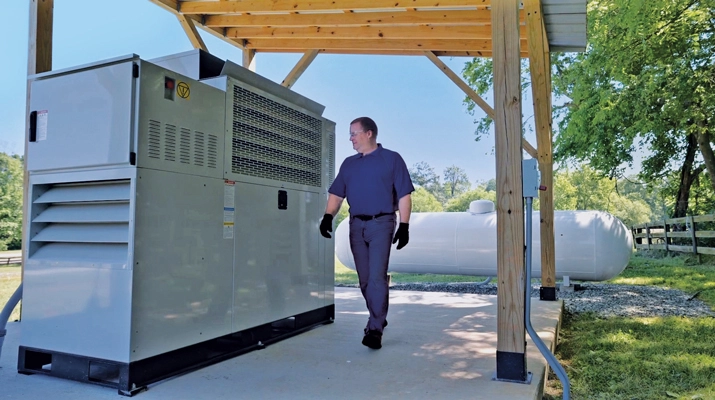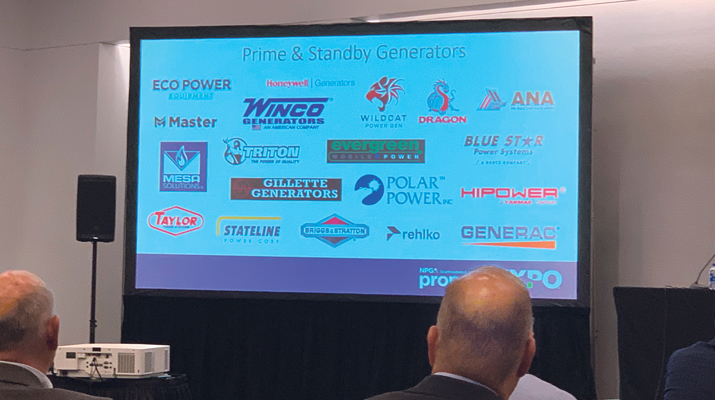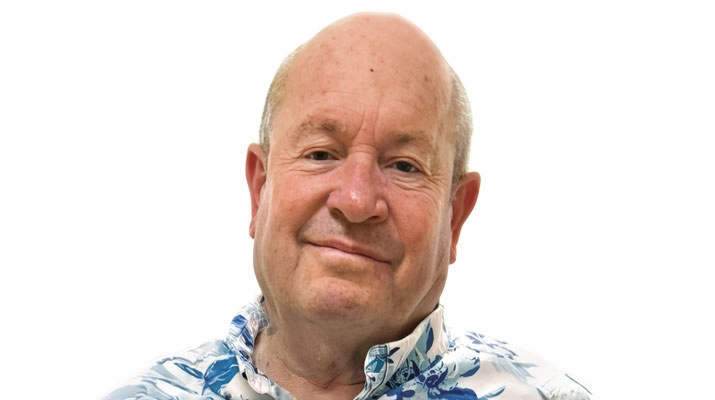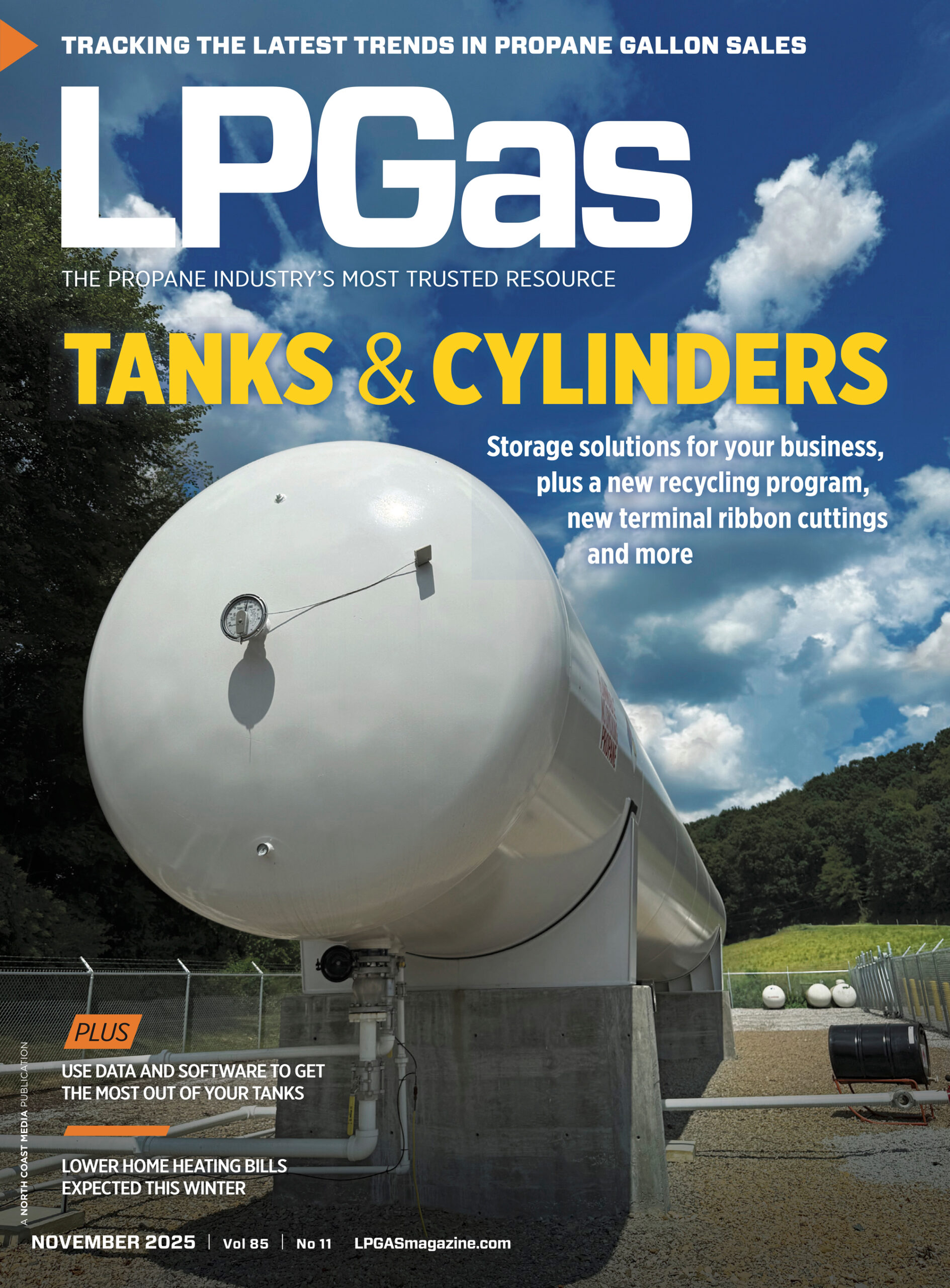Propane industry leaders highlight power generation opportunities in 2025

Slide by slide, about 30 company logos flashed on the screens during an educational session at this year’s Southeastern & International Propane Expo in Charlotte, North Carolina.
The logos represented the many manufacturers and providers of propane-fueled power generation equipment across multiple segments – prime and standby, towable and portable, as well as combined heat and power (CHP).
The session, led by Bert Warner of the Propane Education & Research Council (PERC), highlighted a market that propane industry leaders say is ripe with opportunity for propane marketers seeking to grow gallons and diversify their offerings. This year’s Propane Expo also hosted another power generation session, led by Steve Stump of Dragon Power, on microgrids.
“The nice thing is, we’re not starting from scratch,” says Warner, the director of commercial business development at PERC, during a July call with LP Gas.
The big reveal
During his discussions with the propane industry, Warner says, he simply tries to “pull the curtain back” and reveal the “blue chip companies” already operating in the propane power generation space.
“Whether it’s talking to an engineer or a contractor or even a propane marketer, this equipment is available in these [multiple] sizes today,” he says. “Creating that education and building that awareness around the power generation space is critical.”
Some of the power generation companies have exhibited at propane industry trade shows – Dragon Power, Eco Power Equipment, Enginuity Power Systems, Evergreen Mobile Power and Polar Power, for example, and some have entered propane industry partnerships.
Earlier this year, Blue Star Power Generation, a subsidiary of Blue Star Gas, signed a distributor agreement with EC Power Inc. The partnership enables Blue Star to incorporate EC Power’s XRGI25 – a 24-kilowatt CHP system – into its product offerings for customers. The XRGI25 system provides both heat and on-site power from a single unit.
Last year, PERC completed a three-year partnership with Qnergy, resulting in the development of a standalone, hybrid nanogrid power generation package based on Qnergy’s PowerGen platform. The hybrid technology, ideal for electric vehicle charging, creates an opportunity for a network of distributed, autonomous charging stations powered by propane or other portable fuel.
“We’re really focused on power generation across all the markets – from 1.25 kilowatts in a fuel cell to 30 megawatts in a data center,” says Tucker Perkins, president and CEO of PERC. “We’re aware of all those opportunities. We certainly tend to skew back toward the residential, commercial level that all propane marketers could [participate] in.”
Power generation team
Warner joined PERC power generation team leaders Gavin Hale and Jim Bunsey on the July call with LP Gas, proving in part how power generation applications have expanded into different propane market segments.
While Warner is focused on the commercial market, Bunsey places his attention on material handling and market strategy for ports, which continue with initiatives to cut their carbon output.
“Ports are looked at as a dirty place with high populations around them,” Bunsey says. “They use a lot of diesel.”
Companies such as Pioneer eMobility and EnviroCharge, for example, are providing propane-powered charging infrastructure for port applications, and refrigerated containers need a clean power source as well, he adds.
“Where I know equipment has been deployed, it’s been in the ports,” Bunsey says. “It affects every one of us on a daily basis.”
To maintain momentum in the ports, propane industry leaders are touting new port infrastructure funding opportunities totaling $500 million. The U.S. Department of Transportation’s Maritime Administration is accepting applications through Sept. 10 to support port infrastructure development and improvements through the 2025 Port Infrastructure Development Program.
The National Propane Gas Association says the program provides opportunities for applicants to incorporate propane into their projects. That includes the development of port or terminal microgrids, including backup generators and power sources, and their fueling.
“We’ve been in the game, but it’s nice to be listed now as a fuel that can help the ports or distribution centers,” Bunsey says.

Thinking big
Hale, the director of product development and power generation at PERC, is thinking big when he says of the propane industry, “We got locked into this ‘small KW’ world.” He believes the technology available today and the current industry partnerships with OEMs position propane well for a future in large-scale applications.
“We have traction with more engine OEMs around propane than I can remember,” he says. “We’ve got major OEMs that have a policy now that are all in the U.S. market.”
Hale says more OEMs based overseas are being driven to the U.S. market because they see a pathway to meeting the country’s energy demand needs and cost challenges. He references Jenbacher and Guascor Energy specifically.
Jenbacher, with main headquarters in Austria and North American headquarters in Houston, specializes in on-site power generation through gas-fueled technologies. Its engines have been installed in projects ranging from several hundred kilowatts to 51 megawatts, according to its website.
“They’ve gone from being a marketing organization to a team of 30 salespeople, application engineers and a plan now to build products here in the U.S.,” Hale says.
Guascor, based in Spain, is a manufacturer of gas and diesel engines designed for power generation and other markets. Its gas engines, which Hale describes as “massively efficient in running propane,” can power electricity production plants.
Hale views engaging with OEMs, including those overseas, as a key piece to developing the power generation market because the timing is right, the products are available, and the companies can help in both building the equipment and spreading the message about propane.
“From a technical standpoint, we now have more products to work with than we’ve had for a long time,” he says. “Our playbook has grown massive.”
Messages for marketers
During the Propane Expo session, Warner shared PERC’s goal of displacing diesel in the power generation sector by 12 percent, equating to 45 million gallons, by 2029. He knows it will take more propane marketer buy-in to reach that goal, however. That’s why he wants marketers to keep an open mind when it comes to power generation.
“It’s an area for growth if they want to go after it,” he says.
At first, it may seem out of their comfort zone, he admits, but they don’t have to be experts. They just have to know where to turn – including to industry resources like PERC and partnerships with OEMs or rental companies – when the opportunity presents itself and show confidence in the solution they provide.
“The OEMs are thirsty for it,” Warner says of propane as a clean, reliable solution for growth. “They don’t have the boots on the ground that marketers possess.”
Propane marketers have a tremendous advantage, adds Scott Mook of Evergreen Mobile Power, maker of the JuiceBox generator, in which they can “double dip.”
“Propane marketers already have the customer base for this machine,” he says. “They know the construction [companies], homebuilders, those with tents and the events industry, racing or barbecue cookoffs, but they’ve never thought about providing power. They just want to provide gas. This takes them someplace they haven’t been before.”
Related Articles
Propane powers up amid growing US oil, gas production
Real opportunities in play now for the propane industry
What is your personal or industry experience in the propane power generation space?
















